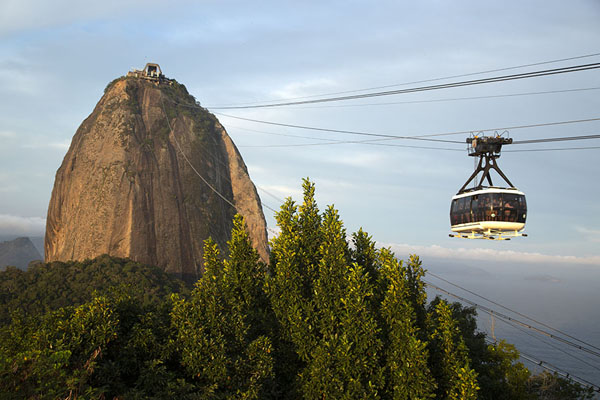Sugar Loaf Mountain (Brazil)
-
A mere 600 million years ago mother nature's geologic hand formed a princely natural wonder, Pao de Acucar or Sugar Loaf. Original inhabitants deemed it Pau-nh-Acqua, later to be changed by the invading French who dubbed it “Pot de Beurre”. Portuguese colonists renamed it “Pao de Assucar” or Bread of Sugar only to be re-invaded by the French who assigned it “Pot de Sucre”. By the Seventeenth century the Portuguese had regained their dominance and Pao de Acucar was reborn to permanency. During this time sugar cane was the primary export and upon completion of the processing the finished product was packed into bread like loaves for shipment. Hence the name Sugar Loaf.
Today Sugar Loaf is the most commonly recognized and sought after tourist attraction in Rio. But it has served its past inhabitants equally well. Navigators for years would spot the imposing figure as the entrance to Guanabara Bay. The first Portuguese arrivers chose the landmark as a settling location for the magnitude of visibility afforded towards the sea and mountains assuring their continued protection.
Today’s tourists enjoy the ease and comfort of a cable car ride to the top of Sugar Loaf which was first installed in 1912, blossoming the tourists industry to Rio.
Reaching the top of Sugar Loaf is actually done in two stages. The first car ascends over 700 feet up Urca Hill affording marvelous views of Corcovado Mountain, the Niteroi Bridge and Guanabara Bay. Transferring to a second car then elevates you an additional 1300 feet to the top where spectacular views of Copacabana and other beaches can be admired.






